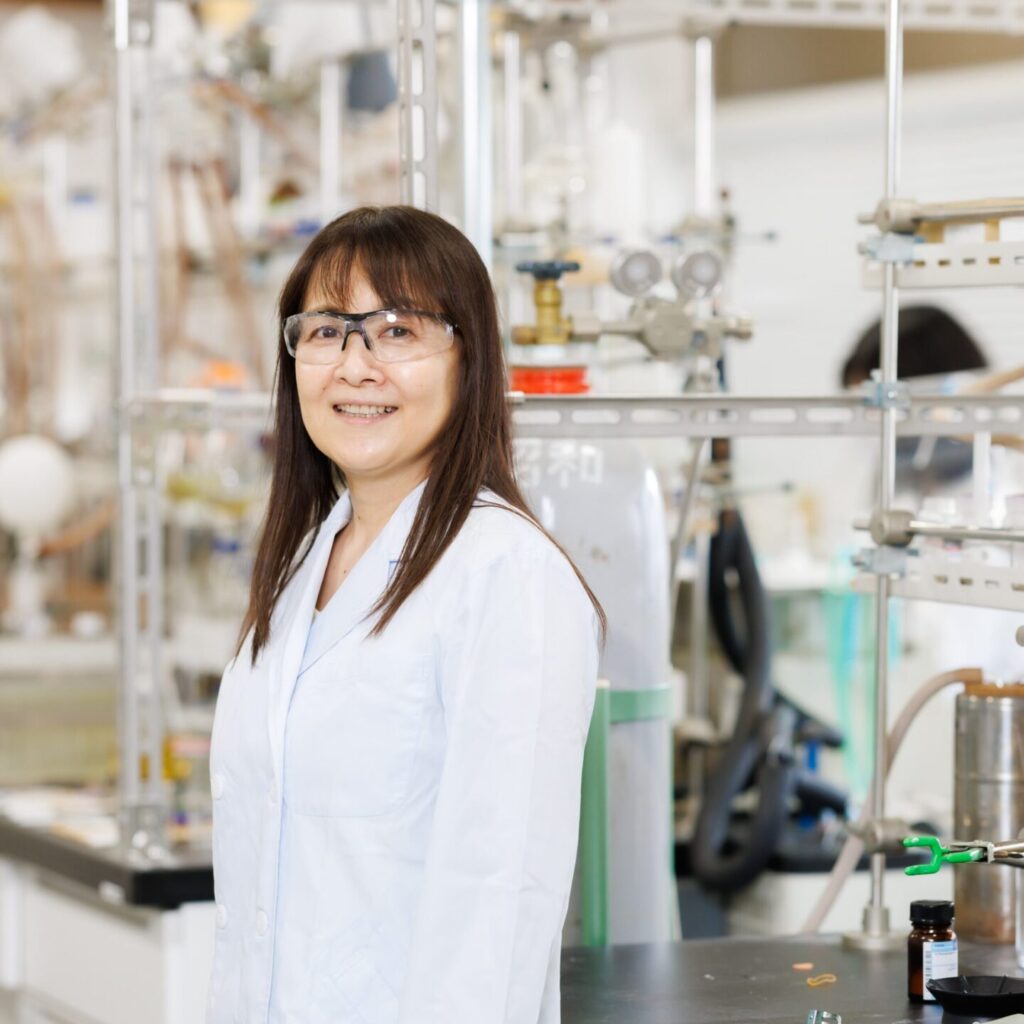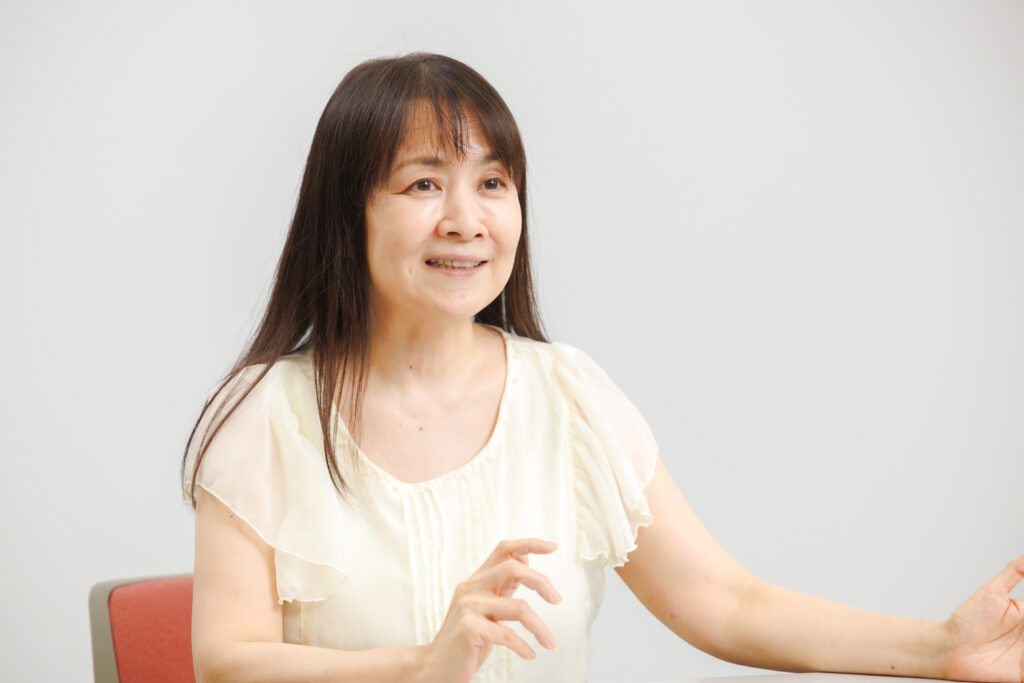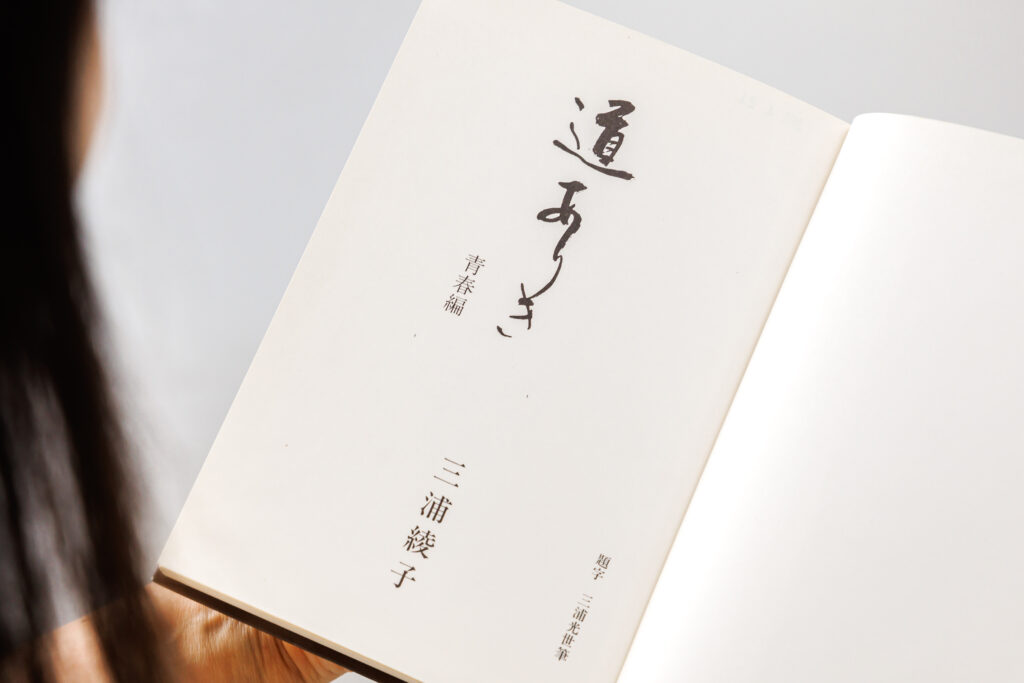
Professor Yumiko Suzuki of the Faculty of Science and Technology, a specialist in synthetic organic chemistry, is working on developing anti-cancer drugs using organocatalytic reactions as well as fluorophores to visualize molecules in the body, and contrast media to realize liver cancer imaging. What is the attraction of organic synthesis chemistry, creating unique organic substances?
After the 2021 Nobel Prize in Chemistry was awarded to Benjamin List of Germany and David W.C. MacMillan of the United States, people started paying more attention to the possibilities of organic catalysts. Organic catalysts are expected to be our next-generation catalysts. They do not contain any metals so are environmentally-friendly, they are cheap, and they are easy to handle.
I developed a chemical reaction that uses a new organic catalyst called N-heterocyclic carbene. I was given a hint by vitamin B1, the coenzyme that catalyzes chemical reactions in the body. The advantage of this catalyst is that it can mediate reactions that other catalysts cannot.
Organic synthesis chemistry has created anti-cancer drugs, fluorophores, and contrast media

Among these, I found a compound that has anti-cancer activity – in other words, it works to suppress cancer growth. I don’t yet know if this will become an anti-cancer drug, but I want to find out the mechanism of its cancer-fighting properties.
In the study of anti-cancer drugs, I discovered a fluorescent substance. It’s called 2-aminoquinazoline. It’s a relatively small molecule and doesn’t affect the actions of other molecules within the body when you incorporate them. It is also highly fluorescent, and easily synthesized, which makes it better than previous fluorescent substances.
We think we can use this as a tool to investigate RNAs, which serve key roles in events such as protein synthesis and passing on genetic information within the body. Our goal is to see if we can observe what actions RNAs take within the cell by incorporating fluorophores into the RNAs and looking at them with an electron microscope.
Perhaps because I’ve been researching synthetic organic chemistry for a long time now, sometimes people from outside will ask if I can’t make such-and-such an organic compound. Now, I’m working with Dr. Nobuyuki Matsumoto, an associate professor of Gastroenterology at St. Marianna University School of Medicine to develop a new type of contrast medium.
A contrast medium is a drug used to visualize specific organs in the body by enhancing contrast, and is used in image diagnosis, such as X-rays. However, existing contrast agents have the problem of being damaging to the kidneys. This means they are difficult to use with kidney-failure patients.
While existing contrast media are almost entirely taken up into the kidneys, the one we are developing is partially taken up into the liver as well, before it reaches the kidneys, so we can reduce the load on the kidneys. Moreover, as we can image the individual liver cells, we should be able to use it for more fine-grained diagnoses for patients with liver diseases such as liver cancer or hepatitis.
It is fun to think about the reasons, when my expectations are wrong.
From the carbene reaction I developed based on a hint from vitamin B1 in the body, I have synthesized a range of organic compounds. These range from substances with anti-cancer activity discovered from this reaction and fluorescent substances discovered in the process of developing these anti-cancer drugs, to contrast media based on my expertise in synthetic organic chemistry.
I get a sense of satisfaction from my research when I can synthesize a substance that has been unknown, and which contains great hidden potential. It is pleasant when a chemical reaction goes as planned, but I also enjoy figuring out the mechanisms of reactions that happened unexpectedly.
What’s important to me is acquiring interesting scientific findings. I’ll tell my students, “We should do something different, because other researchers are doing this.” I want to do research with originality, and to have unique outcomes.
The book I recommend
“Michi Ariki”(There is a Path)
by Ayako Miura, Shufu-no-Tomosha

This is the autobiographical story of someone who was a primary school teacher during World War II but left the profession from guilt at having helped instill militaristic education, and later converted to Christianity while recuperating from tuberculosis. This was the book that led me back to faith when I temporarily left the Church in high school.
-
Yumiko Suzuki
- Professor
Department of Materials and Life Sciences
Faculty of Science and Technology
- Professor
-
After graduating from the University of Shizuoka’s School of Pharmaceutical Sciences, she obtained her Ph.D. in Pharmaceutical Sciences from the Graduate School of Pharmaceutical Sciences at the same university. After being a doctoral researcher at the Department of Chemistry at Columbia University, she worked as a lecturer in the School of Pharmaceutical Sciences, University of Shizuoka, then as associate professor in the Faculty of Science and Technology at Sophia before assuming her current position in 2022.
- Department of Materials and Life Science
Interviewed: August 2022